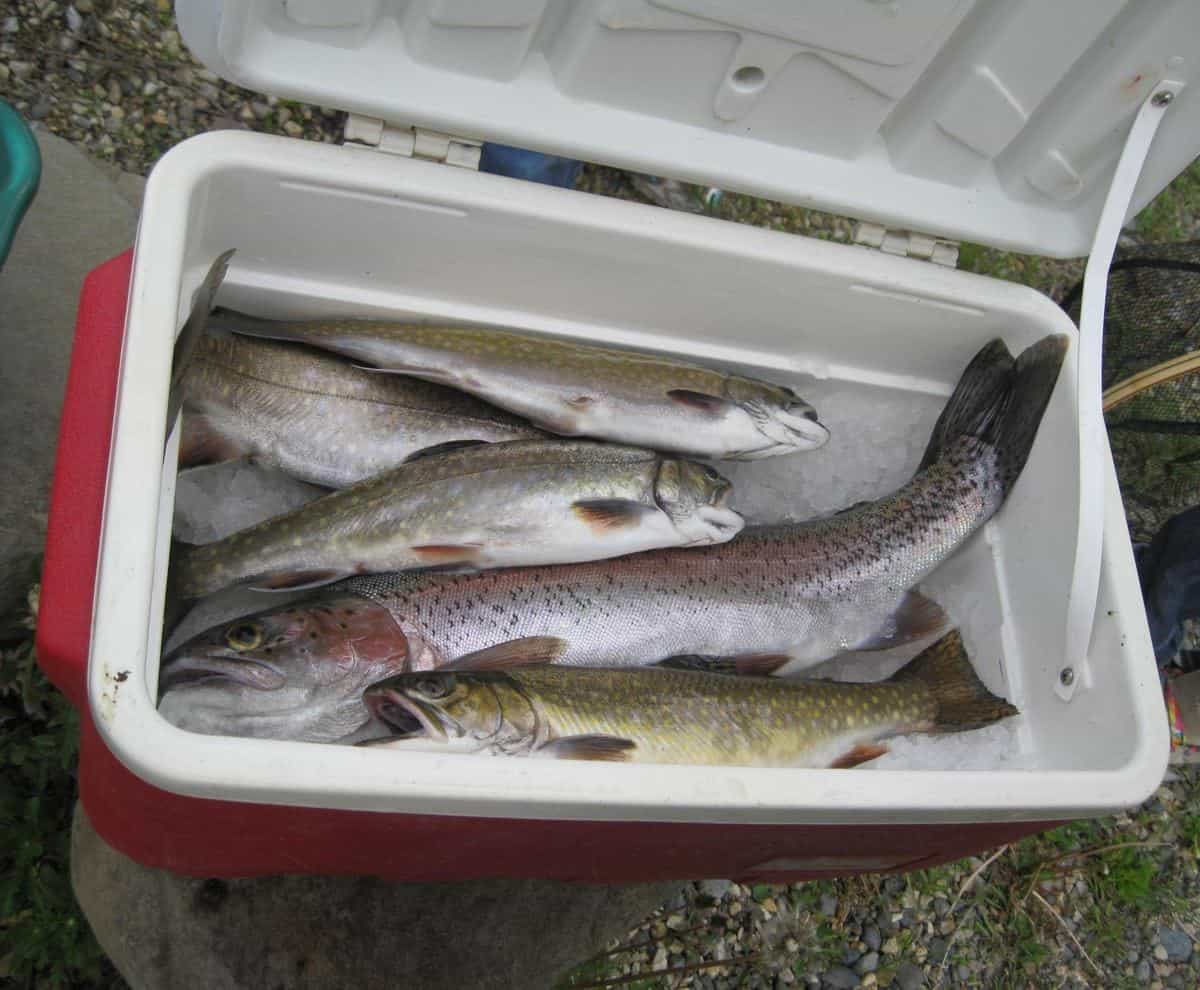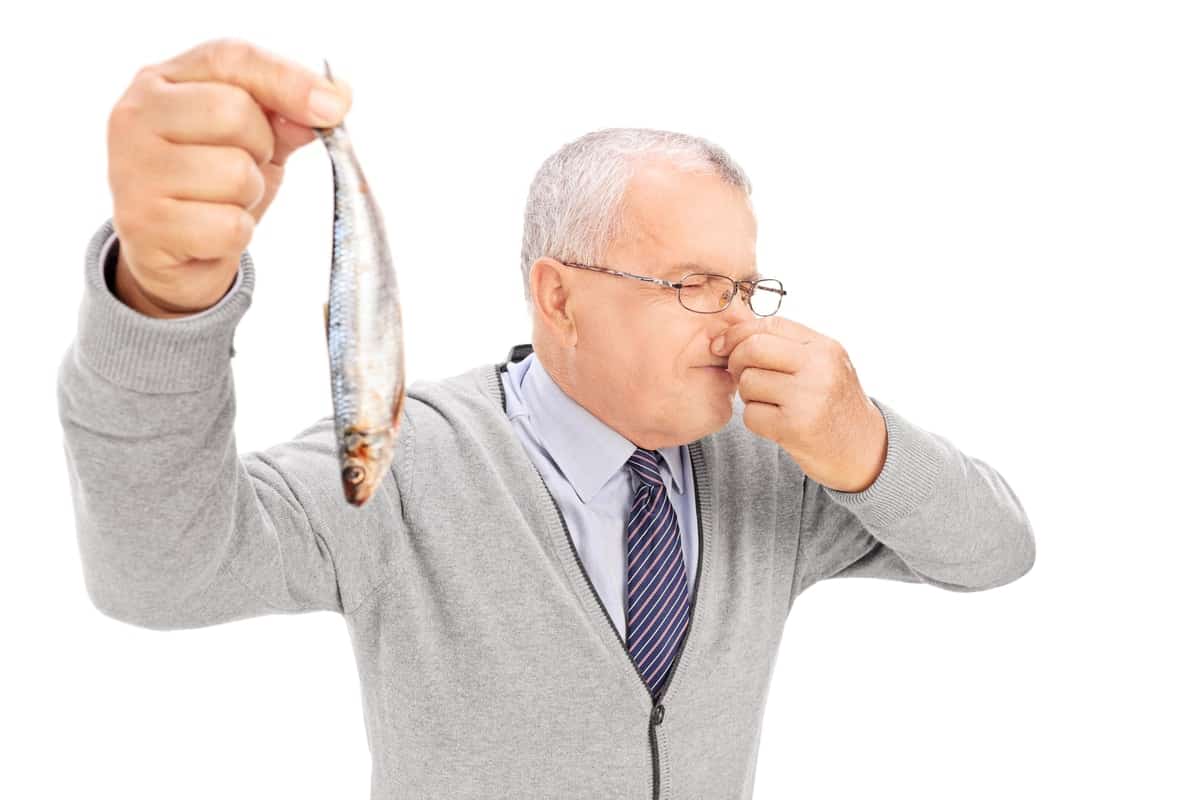
If you want to keep fish as fresh as possible, you need to be prepared. It’s recommended to put fish on ice as soon as catching it to ensure freshness, and there are many ways to do so. Keeping fish fresh ensures cleanliness, taste, and texture.
You can keep fish on ice before cleaning them for 24 – 36 hours if you pack them correctly. Using an insulated cooler with a draining spout filled with crushed ice is ideal.
There are other tips and tricks that anglers use to ensure freshness. Some people might not have access to all of the equipment, so there are a few alternatives. We want you to have the freshest fish possible to avoid any food poisoning.
The Best Way to Keep Fish on Ice
Always have a plan. Know how you intend on storing your fish and plan accordingly. Have a [sherpa id=”aa540d83″] that allows draining; if you don’t have one, you can simply drill holes at the bottom of the cooler you can access. If you allow fish to get soggy by lack of draining, it jeopardizes the fish’s integrity.
You want to keep the fish as cold as possible, so be sure to bring extra ice.
The general consensus for how much crushed ice you’ll need is for every fish you catch; you need about two pounds of crushed ice.
It’s recommended to stun and bleed the fish as soon as possible. Keeping them unbled causes the fish to deteriorate faster.
Double wrapping the fish in cling wrap is encouraged. Be sure to let all the air out while wrapping the fish. Drain and refill ice in the cooler regularly. If one fish spoils, it can cause the rest of the fish to spoil faster.
How to Keep Fish Fresh
We’ve established fish need to be cold, but how long can they stay fresh? The most recommended process for the freshest fish possible is to bleed and gut or fillet immediately, wash the fish off with cold water, dry it off, double wrap it with cling wrap, then pack it nicely with crushed ice.
This process might be a little time-consuming, but as each day passes, the fish deteriorate faster, which can change the taste.
Once you get home, you can either stick the fish in the fridge for a day or two until you’re ready to cook it, or you can put it in the freezer.
If you’re freezing the fish, try to get cling wrap and ziploc bags that are freezer-friendly. Always pack the fish individually, so you’re only thawing what you’re going to cook. When storing in the freezer, try to keep as much air out of the bags as possible. This prevents freezer burn.
| Fish Condition | Low End of Safe Time | Maximum Safe Time Limit |
| Ungutted on Ice | 24 hours | 36 hours |
| Bled & Ungutted on Ice | 24 hours | 48 hours |
| Gutted, Wrapped, on Ice | 72 hours | 120 hours |
| Ungutted & Refrigerated | 24 hours | 36 hours |
| Frozen & Wrapped | 3 Months | 6 months |
One of the best ways to keep fish fresh is to store them in the freezer as soon as possible. This preserves the fish’s integrity and seals in the freshness. When thawing the fish, it’s recommended to thaw them in the fridge rather than leaving them out.
Why Use Crushed Ice?
Crushed ice is recommended because it can easily be packed into the [sherpa id=”aa540d83″] and spreads around the fish. Keeping the fish cold is optimal and crushed ice helps secure that freshness. Other forms of ice don’t offer this kind of protection for the fish.
Some also prefer crushed ice because it’s easy to store and fill their coolers. Bags of crushed ice are easier to break up, especially while on a boat. And you can use the crushed ice to keep your drinks cold while fishing.
If You Don’t Have Crushed Ice
If you don’t have access to crushed ice, that’s okay. You can use cubed ice. Fill your cooler with the cubed ice and pack some ziploc bags with cubed ice and surround the fish. You need to make sure you have extra ziploc bags and ice on hand. If storing this way, fewer fish will be able to fit in the cooler.
You can also bring a bowl and cling wrap. Dry the fish and place a slightly wet towel at the bottom of the bowl and place the fish on the bottom. Wrap the top of the bowl in cling wrap and place it in a cooler with cubed ice. Drying the fish removes most of the bacteria from the dirty water.
If You Don’t Have Any Ice
If you’re unable to get ice, there’s a few options:
- Keep the fish alive in a live well. Bring a few buckets so the fish won’t be overcrowded. If the water gets too hot, you’ll have to either release them or put them on ice. Once you’re ready to head home, you should stun the fish and put them in a cooler. It’s difficult to transport live fish if they’re still in the live well.
- An unusual alternative is moss; peat moss is best. You would need to stun the fish, clean it, and soak the moss in cold water, then squeeze out all the water. Spread the moss out on paper or a tarp and stuff the fish with the moss. Keep the fish spread apart from each other.
- Keeping the fish on a stringer is also a viable option. This does require you to check on the fish very frequently. You also need to be cautious of your boating speed.
What Causes Fish to Spoil

Heat is the number one factor in fish spoiling faster. That is why it is a must to keep fish cold; once they begin to get hot, their meat is no longer viable. Opening the cooler that the fish are in lets in heat and causes the ice to melt faster. Only open the cooler when absolutely necessary.
The spread of bacteria is also a factor and must be avoided at all costs. Rinse off fish before storing them in the cooler and clean off the knife before and after cutting any fish. Heat also aids in the production of bacteria.
Always wash your hands immediately before and after touching fish.
How to Tell If the Fish Has Gone Bad
No one wants to get food poisoning after a fishing trip. Here are some ways to tell if the fish has spoiled and gone bad:
- Pungent fishy odor – Yes, fish already have a fishy smell, but it’s usually mild.
- Check the color of the gills – If they’re still attached, they should be a reddish color.
- Very slimy coat – Once fish begin to deteriorate, a film will start to cover it
- White or milky color
- Eyes – If the head is still attached, the eyes should be clear
- Scales – If the fish is still whole, the scales should still be unblemished
If you think your fish might be just a little questionable, throw the fish out. It’s not worth the risk. There are two different types of food poisoning you can get from eating bad fish. Although it typically isn’t serious, it still puts your stomach and body through unnecessary stress.
Happy Fishing and Tight Lines
